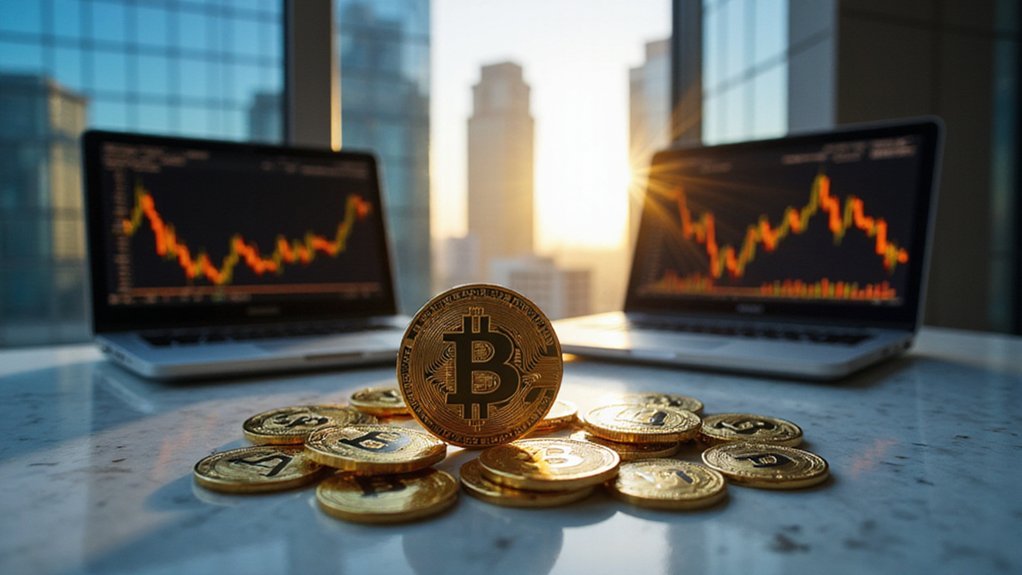The great rotation has begun, though perhaps not the one most analysts anticipated. Between July 14-19 alone, Wall Street orchestrated an $810 million injection into corporate Bitcoin reserves across 58 treasury updates—a figure that would have seemed fantastical mere years ago when Bitcoin was dismissed as digital fool’s gold.
The mathematics are becoming impossible to ignore. Public companies now collectively clutch approximately $91 billion in Bitcoin, representing an 18% surge in six months. These corporate treasuries added 243,615 BTC in Q2 2025, outpacing even the voracious ETF accumulation that already absorbs Bitcoin at six times the daily mining rate. When your institutional demand exceeds new supply by such margins, traditional price discovery mechanisms tend to capitulate rather dramatically.
When institutional demand exceeds new supply by such overwhelming margins, traditional price discovery mechanisms tend to capitulate rather dramatically.
Michael Saylor’s Strategy continues its relentless acquisition spree with 4,225 BTC added during that remarkable week, while international players like Japan’s Metaplanet (797 BTC) and Sweden’s Sequans (683 BTC) signal this phenomenon transcends American boardrooms.
Even smaller firms—The Smarter Web Company’s 325 BTC purchase, various Australian and Chinese entities—are participating in what increasingly resembles a coordinated reallocation of corporate treasury strategies.
The implications extend beyond mere corporate FOMO. Vault Ventures exemplifies this evolution, maintaining Bitcoin as 16.27% of its digital asset treasury while incorporating ETH and SOL—a sophisticated approach treating cryptocurrency as foundational infrastructure rather than speculative plaything.
Meanwhile, Cantor Equity Partners’ anticipated $4 billion transaction suggests Wall Street’s SPAC machinery is pivoting toward Bitcoin acquisition vehicles.
Perhaps most tellingly, the U.S. Government formalized its Strategic Bitcoin Reserve in March 2025, establishing a Digital Asset Stockpile that acknowledges Bitcoin’s transformation from internet curiosity to strategic national resource. When federal policy embraces the 21 million supply cap as “digital gold,” the institutional legitimacy question becomes moot. This institutional embrace reflects Bitcoin’s enhanced security credibility, as the protocol never hacked throughout its operational history provides the foundation for such massive treasury allocations.
ETFs continue absorbing supply while corporate treasuries compete for remaining liquidity, creating dynamics that would challenge even seasoned commodities traders. The fundamental supply constraint becomes even more pronounced when considering that daily mining produces only approximately 900 BTC against this institutional tsunami. The revolution isn’t merely financial—it’s structural, representing a fundamental recalibration of how institutions perceive scarce digital assets within broader portfolio construction. This shift parallels the broader acceptance of digital assets as legitimate financial instruments, transforming from experimental technology into established treasury holdings.
The great rotation, indeed, though toward Bitcoin rather than traditional sectors most anticipated.









